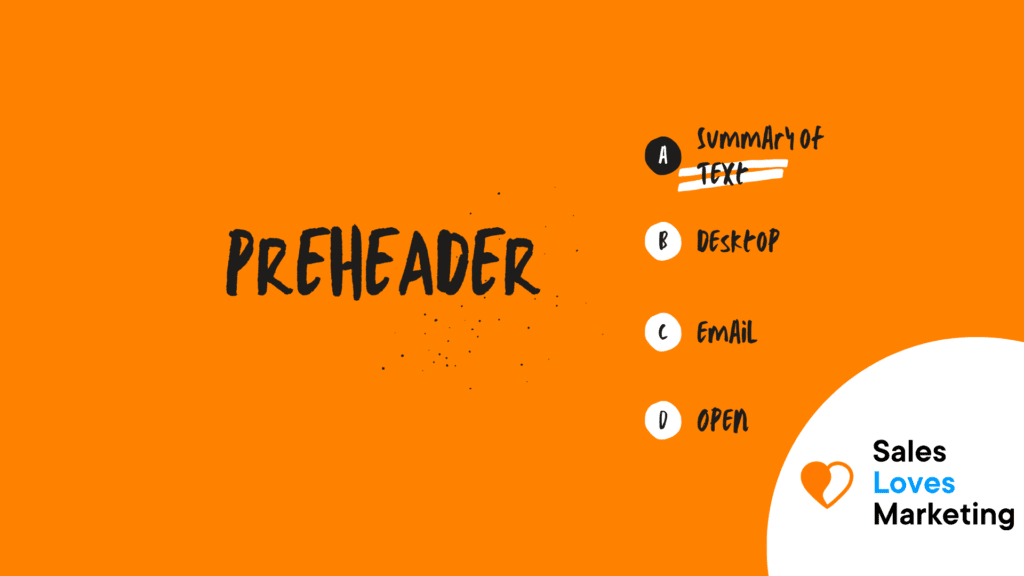What is a Preheader?
A preheader (also known as the “Johnson Box”) is the short summary text snippet that accompanies the subject line when viewing an email from the inbox.
Many desktops, mobile, and web email clients now provide email headers so you can see what’s in the message without opening it.
Why is a Preheader in an email campaign important?
The preheader is totally unknown to some users since email clients automatically take from the email content the information or text that will be displayed in this part, often from the first lines of the content they get.
So this may raise the question: If this text is generated automatically, why should it be of interest or concern?
One of the main reasons is that this text is one of the three elements that are initially displayed in the inbox next to the recipient and the subject line. T these are precisely the three elements that a subscriber will consider when deciding whether to open the mail or message.
When the preheader is used consciously, it has the importance of being the complement to the subject line that will differentiate it from the others and helps to achieve a better email open rate. When well written, a pre-header will be a faithful and striking summary of the message that readers will see.
When displayed automatically, you can see error messages in the pre-headers that indicate that “the message cannot be displayed correctly, and you must press here.” It would be a waste if, after thinking and crafting a good subject line, the displayed text was that display error.
The opportunity to generate curiosity and attention that the preheader offers should not be missed.
Where is the Preheader in an email?
The email preheader can be seen next to or below the subject line.
Email Preheader best practices.
- The main tactic or principle is always to ensure the use of a preheader. If this is not done, you can end up with various unproductive texts in that field, from repeated phrases or subject lines to showing the recipient the option to unsubscribe.
- The human factor must be included, the personal touch: every effort should be made to personalize as many elements as possible in an email. Greetings, personalizing subject lines have proven their worth in increasing the rate of open and read messages. The same is true for pre-headers.
- Using a question: Instead of a statement, using questions in email subject lines is usually a way to connect with users. Saying “Earn an additional 33%” is not the same as saying, “Would you like to earn an additional 33%? You can also use this strategy in the pre-headers.
- You can highlight messages using emojis: this has become a valuable tool for the subject lines of emails, and as in the previous tips, it can be applied in the field of pre-headers so that messages stand out from others.
- Do not repeat subject line text: Do not waste this second chance to convince that you have the preheader by repeating the same information that was already given.
- You can include an incentive advance: be more original in the subject lines so that it is brief and the offer is revealed in the preheader.
- Show a short summary of the email content: you can mention new or on-sale products or even new brands.
- Be precise: Subscribers will only pay attention for a few seconds, so grab their attention immediately, being brief, friendly, and straight to the point.
